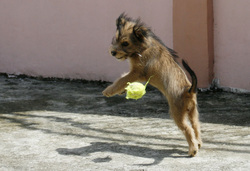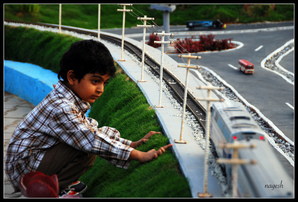
If you are looking for a guide on how to train your dog to be a guard dog or just interested in teaching your pet simple tricks, this page is definitely for you. Dog lovers nowadays always find a way in making dog and man interaction more fun and exciting. A new and rising fun team sport is dog agility. Dog agility involves equipments and obstacles that put your dog’s skills to test.
Starting Your Own Course
Dog agility equipment is designed to create an environment that would encourage a healthy and active lifestyle for you and especially for your pet dog. In starting your own dog agility course, you must have sufficient space for your dog to move around. Your backyard is an excellent area to set up your obstacle course. (Click here for the report.)
Once you have a space that can hold your dog agility course, you may now start choosing the equipments you need. Several recognized bodies in dog agilities have designed their own obstacles for dog agility. One of the most common obstacles you will see in dog agility courses are jumps. Jumps are further classified into different heights which are determined by the dog’s height on its withers or shoulders. Common jumps are standard jump, wing jump, long jump, and tire jump.
Another challenging equipment for your dog is the tunnel which is perfect for puppies. Contact obstacles have yellow contact zones on each of the equipment. In using this obstacle, it is needed for the pet dog to have at least one paw in each contact zones when they get on and get off the obstacle. Lastly, weave poles are obstacles designed to be passed in zigzag manner. The dog must not miss a pole to correctly surpass the obstacle.
The Course for Your Pet
Courses vary for each dog. There are certain athletic requirements to be followed for each course. Breeds that are naturally less agile are rarely seen in dog agility courses. There are also requirements such as age and height that are to be fulfilled.
Why Participate?
Dogs are naturally able to wander around. They hunt by running and chasing preys in their search for food. They jump inside bushes and climb up steep slopes. With domestication, they are deprived of this freedom in their crates and cages. Dog agility courses allow them to run around freely following their natural instincts. The courses mirror obstacles that are seen in nature.
Dogs are not the only one who benefits in this activity. Dog owners will run alongside their pets. They also instruct and assist their pets in passing tunnels and jumping obstacles. With such strenuous activity, your body will surely get a decent cardiovascular exercise.
The course also promotes stronger bonds between the dog and its master. The course is created in a way that the dog will need you to complete the course. It relies on your instruction passing the obstacles. This will exercise the trust of the dog to you. Your communication will improve on the process.
Starting Your Own Course
Dog agility equipment is designed to create an environment that would encourage a healthy and active lifestyle for you and especially for your pet dog. In starting your own dog agility course, you must have sufficient space for your dog to move around. Your backyard is an excellent area to set up your obstacle course. (Click here for the report.)
Once you have a space that can hold your dog agility course, you may now start choosing the equipments you need. Several recognized bodies in dog agilities have designed their own obstacles for dog agility. One of the most common obstacles you will see in dog agility courses are jumps. Jumps are further classified into different heights which are determined by the dog’s height on its withers or shoulders. Common jumps are standard jump, wing jump, long jump, and tire jump.
Another challenging equipment for your dog is the tunnel which is perfect for puppies. Contact obstacles have yellow contact zones on each of the equipment. In using this obstacle, it is needed for the pet dog to have at least one paw in each contact zones when they get on and get off the obstacle. Lastly, weave poles are obstacles designed to be passed in zigzag manner. The dog must not miss a pole to correctly surpass the obstacle.
The Course for Your Pet
Courses vary for each dog. There are certain athletic requirements to be followed for each course. Breeds that are naturally less agile are rarely seen in dog agility courses. There are also requirements such as age and height that are to be fulfilled.
Why Participate?
Dogs are naturally able to wander around. They hunt by running and chasing preys in their search for food. They jump inside bushes and climb up steep slopes. With domestication, they are deprived of this freedom in their crates and cages. Dog agility courses allow them to run around freely following their natural instincts. The courses mirror obstacles that are seen in nature.
Dogs are not the only one who benefits in this activity. Dog owners will run alongside their pets. They also instruct and assist their pets in passing tunnels and jumping obstacles. With such strenuous activity, your body will surely get a decent cardiovascular exercise.
The course also promotes stronger bonds between the dog and its master. The course is created in a way that the dog will need you to complete the course. It relies on your instruction passing the obstacles. This will exercise the trust of the dog to you. Your communication will improve on the process.

 RSS Feed
RSS Feed